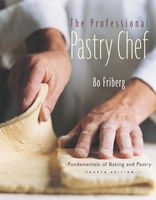Advertisement
Malt extract
By Bo Friberg
Published 1989
A highly nourishing extract derived from sprouted barley that has been dried and ground. It is added to yeast breads to aid in fermentation by converting starch to sugar, which provides food for the yeast. Malt also helps to retain moisture in baked goods, and it adds color to the crust, as it caramelizes at a very low temperature. Diastatic malt contains the enzyme diastase, which, like amylase, converts starch into sugar. Diastatic malt should not be used in products with a long fermentation period, however, as too much of the starch will be broken down. Nondiastatic malt is processed at a higher temperature, which kills the diastase. Malt extract is sold in both a dried, powdered form (sometimes labeled malt sugar) and as a syrup. When granulated malt extract or malt sugar is called for in recipes in this book, you should use the nondiastatic formula. If malt sugar or malt extract is not available, in most cases, you may substitute honey at a 2:1 ratio.


